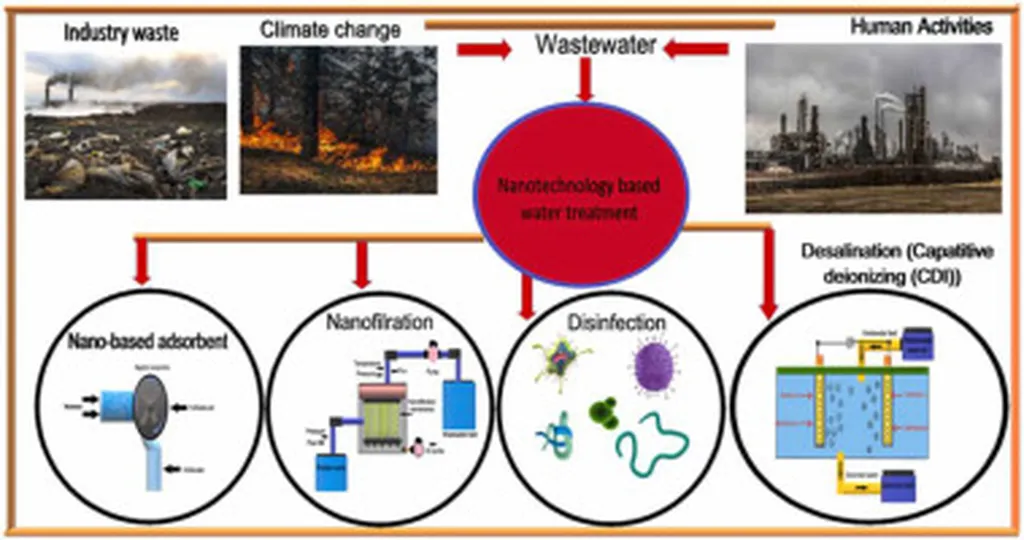In the quest to clean up our environment, scientists are turning to tiny, powerful helpers: nanoparticles. A recent study published in *Next Materials* has unveiled a promising method for degrading synthetic dyes in water using dextran-stabilized calcium peroxide nanoparticles. This research, led by Gopal Samy Balakrishnan from the Department of Biotechnology at KIT-Kalaignarkarunanidhi Institute of Technology in Coimbatore, India, could have significant implications for the agriculture sector and beyond.
Synthetic dyes, widely used in industries such as textiles, paper, and plastics, often find their way into water bodies, posing severe environmental and health risks. Brilliant green (BG) dye, a common synthetic dye, is known for its persistence in the environment. The study focused on developing an efficient method to degrade BG dye using dextran-stabilized calcium peroxide nanoparticles (dex@CPnps).
The researchers synthesized dex@CPnps through a precipitation method and characterized them using various techniques, including X-ray diffraction, Fourier Transform Infrared Spectroscopy, and Scanning Electron Microscopy. They then evaluated the nanoparticles’ efficiency in degrading BG dye under different conditions, such as oxidant dosage, solution pH, and contact time.
Using a central composite design combined with response surface methodology, the team optimized the process parameters. They achieved a maximum degradation efficiency of 90.18% under optimal conditions. “The results were quite promising,” said Balakrishnan. “We were able to achieve a high degradation efficiency, which indicates the potential of dex@CPnps as an effective solution for removing synthetic dyes from aqueous environments.”
The study also analyzed the kinetic modeling of the degradation process, revealing that it followed a pseudo-second-order model. This insight could be crucial for designing and scaling up the degradation process in real-world applications.
The implications of this research for the agriculture sector are significant. Agriculture often involves the use of dyes for various purposes, such as marking plants or identifying pests. However, the improper disposal of these dyes can lead to water pollution, harming both the environment and agricultural productivity. The use of dex@CPnps could provide a sustainable solution for degrading these dyes, ensuring a cleaner and healthier environment for agricultural activities.
Moreover, the advanced oxidation process used in this study could be applied to other pollutants in the agriculture sector, such as pesticides and herbicides. This could open up new avenues for research and development in the field of environmental remediation.
As Balakrishnan noted, “The potential applications of this technology are vast. We hope that our findings will inspire further research and development in the field of nanotechnology for environmental remediation.”
In conclusion, this study represents a significant step forward in the quest for sustainable and effective solutions for environmental pollution. The use of dextran-stabilized calcium peroxide nanoparticles for degrading synthetic dyes offers a promising approach that could be applied in various industries, including agriculture. As research in this field continues to evolve, we can expect to see even more innovative and effective solutions for environmental remediation.

